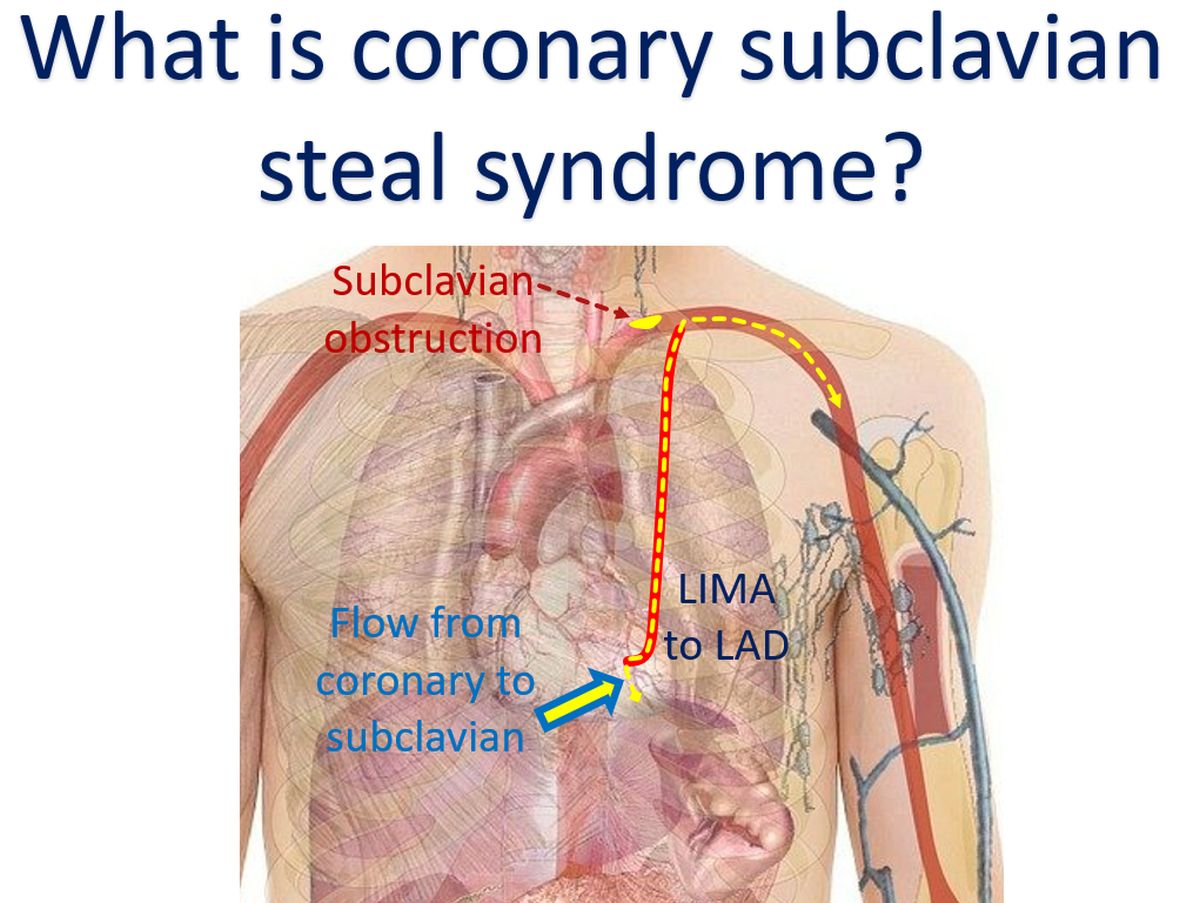What is coronary subclavian steal syndrome?
What is coronary subclavian steal syndrome?
Coronary subclavian steal syndrome is the diversion of blood from the coronary circulation to the exercising left upper limb after a coronary artery bypass graft (CABG) using left internal mammary artery (LIMA). This occurs when there is a high grade narrowing or occlusion of left subclavian artery before the origin of the left internal mammary artery. Though it is a rare situation, it is a serious threat to the success of CABG. Coronary circulation is the blood flow to the heart. Left internal mammary artery is the blood vessel to the chest wall. Subclavian artery is the blood vessel to the upper limb.

Due to the steal, blood supply to the heart muscle may not be sufficient and it could produce chest pain, heart attack, heart failure or severe abnormalities of heart rhythm. Narrowing of subclavian artery can be suspected when there is a difference in the blood pressure between the two arms. If there is a difference of more than 10 mm Hg between the two arms, an angiogram of the subclavian artery can be done along with coronary angiography. Coronary angiogram is the test used to detect blocks in the blood vessels of the heart. It is done by injecting radiocontrast medications to the blood vessels of the heart and obtaining continuous X-ray imaging using specialized equipment in a cardiac catheterization laboratory.
Exercise stress test by hand grip of the left hand is a useful test to document coronary subclavian steal syndrome. Awareness of coronary subclavian steal syndrome in those who have undergone coronary artery bypass surgery is important as the symptoms can be variable. It causes a functional graft failure if there is significant narrowing of the initial part of subclavian artery. Screening for narrowing of subclavian artery by checking blood pressures in both arm has been recommended prior to CABG.
If narrowing of the subclavian artery is detected, it can be treated by either surgery or angioplasty before CABG, with excellent long term results. In those who have symptoms, both surgery and angioplasty give good relief of symptoms. Angioplasty is removal of blocks using small sturdy balloons attached to the tip of small tubes known as balloon catheters. They are introduced through the blood vessel under continuous X-ray imaging.



